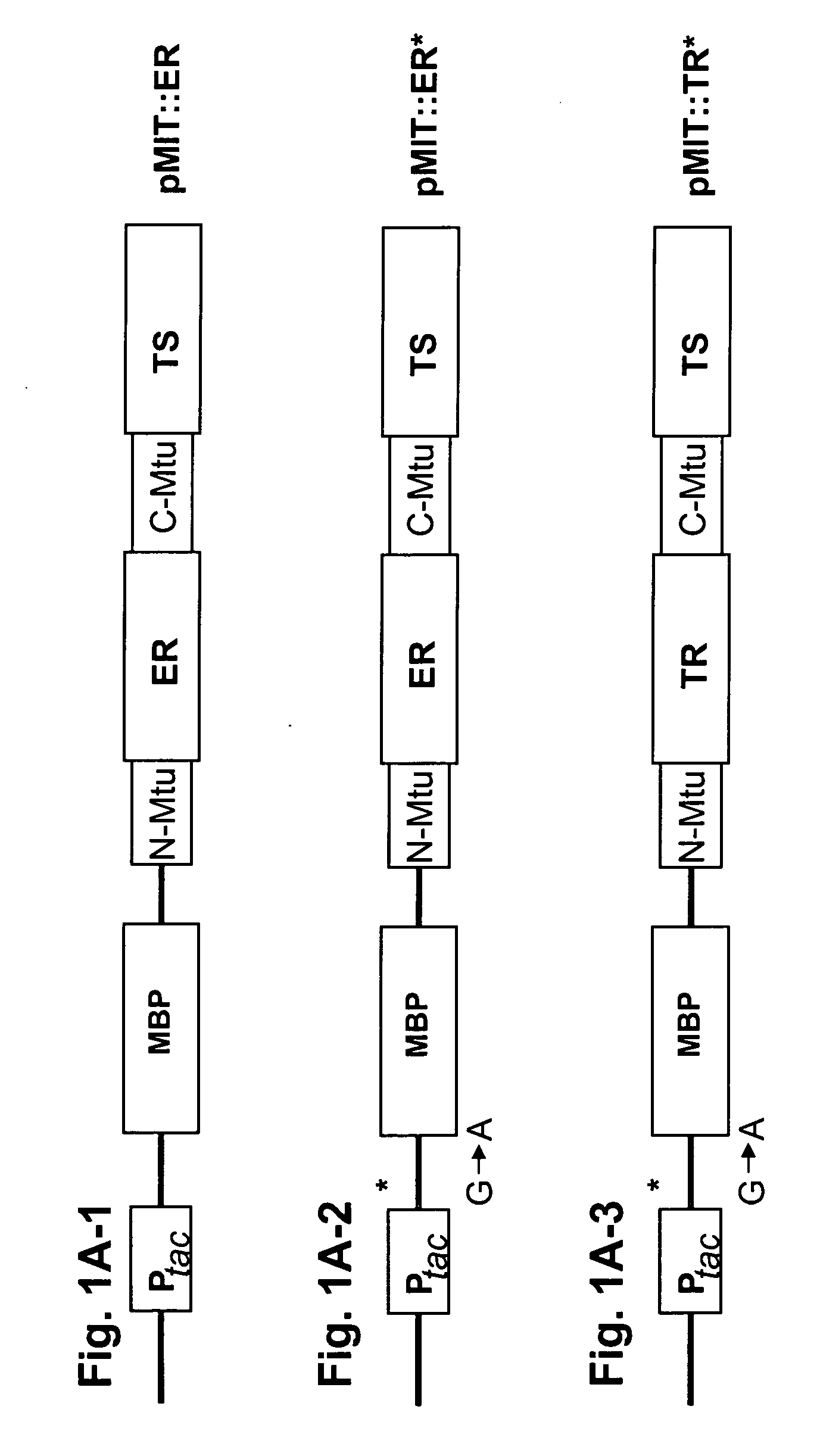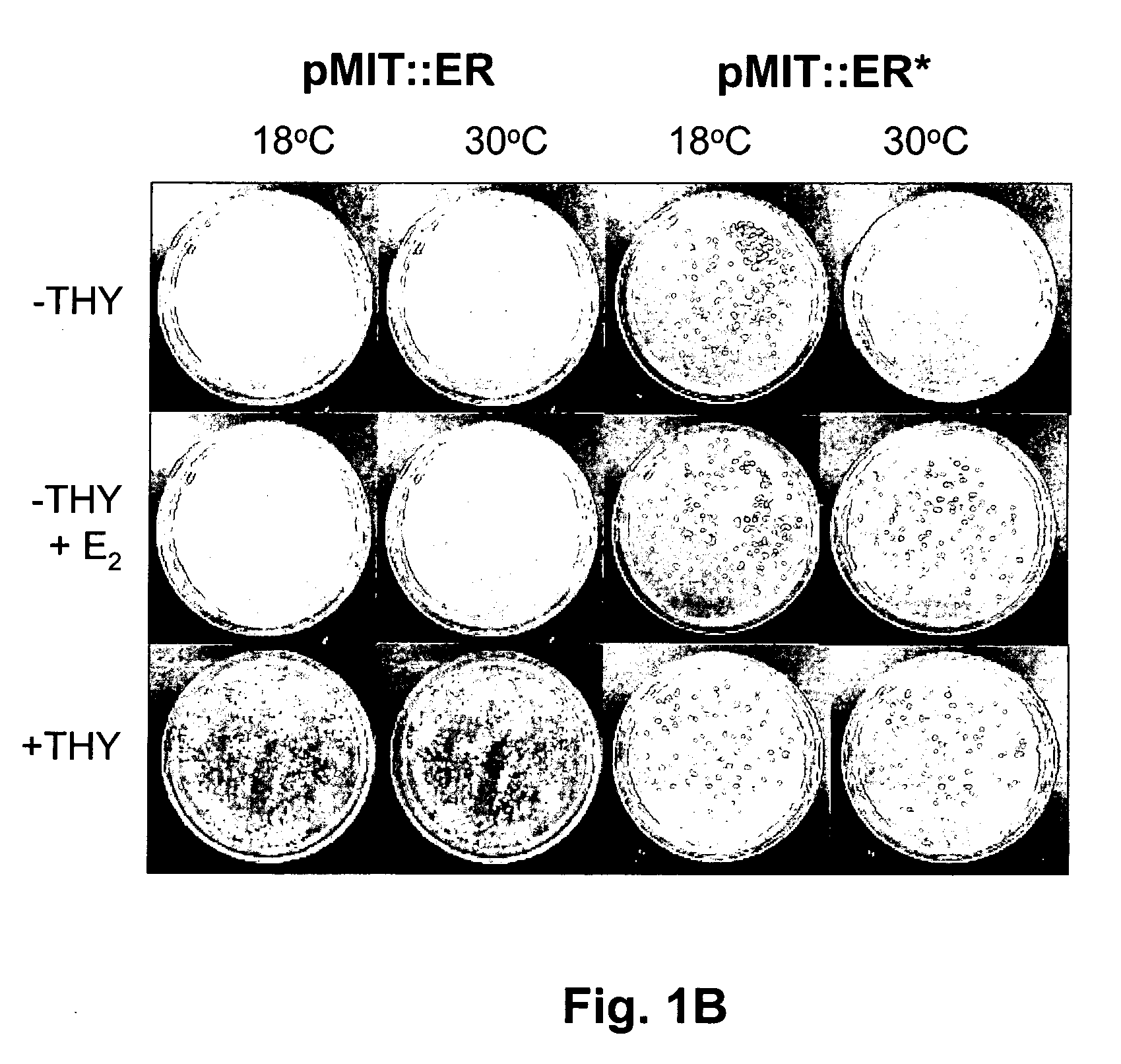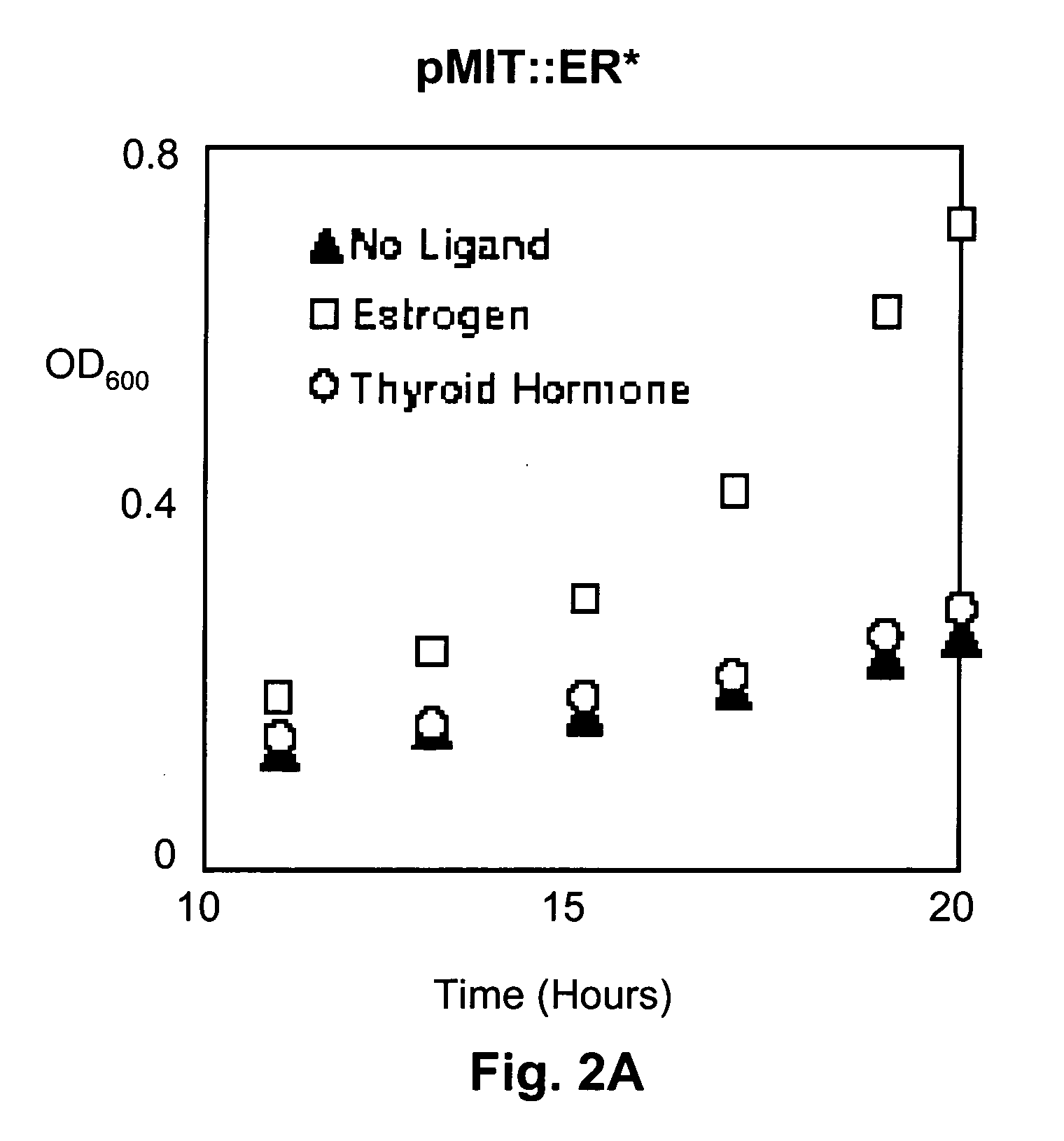Bacterial ligand-binding sensor
a technology of ligand-binding sensors and bacteria, which is applied in the field of biosensors and drug screening, can solve the problems of time-consuming, high cost, and complex screening approaches
- Summary
- Abstract
- Description
- Claims
- Application Information
AI Technical Summary
Benefits of technology
Problems solved by technology
Method used
Image
Examples
example
[0071] A Bacterial Biosensor of Endocrine Modulators
[0072] The invention is now described with reference to the following example. This example is provided for the purpose of illustration only, and the invention is not limited to this example, but rather encompasses all variations which are evident as a result of the teaching provided herein.
[0073] In this example, thymine-auxotrophic E. coli bacteria were transformed with a genetic construct encoding a fusion protein including a thymidylate synthase (TS) moiety fused with a human hormone receptor protein ligand-binding domain (LBD) which was interposed between the amino- and carboxyl-terminal splicing regions of the Mtu RecA intein. An E. coli maltose binding protein moiety was also fused with the amino terminal splicing region of the intein. These fusion proteins were expressed in the transformed bacteria and relieved thymine auxotrophy in the presence of the corresponding hormone or agonists thereof. Antagonists of the receptor...
PUM
| Property | Measurement | Unit |
|---|---|---|
| Solubility (mass) | aaaaa | aaaaa |
Abstract
Description
Claims
Application Information
 Login to View More
Login to View More - R&D
- Intellectual Property
- Life Sciences
- Materials
- Tech Scout
- Unparalleled Data Quality
- Higher Quality Content
- 60% Fewer Hallucinations
Browse by: Latest US Patents, China's latest patents, Technical Efficacy Thesaurus, Application Domain, Technology Topic, Popular Technical Reports.
© 2025 PatSnap. All rights reserved.Legal|Privacy policy|Modern Slavery Act Transparency Statement|Sitemap|About US| Contact US: help@patsnap.com



